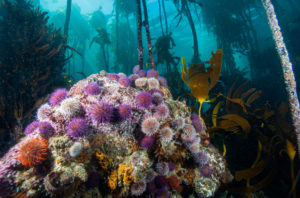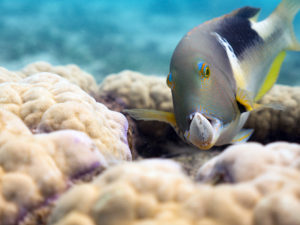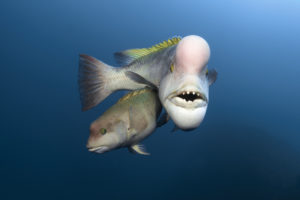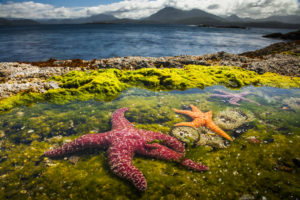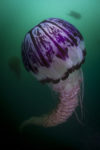Blue Planet II Trailer (2:57)
It’s been a long time in coming, but BBC’s new nature documentary series Blue Planet II with David Attenborough finally premiered in North American in early 2018. Hard to believe that its predecessor, The Blue Planet, debuted way back in 2001, but in this case the wait for the sequel is worth it. Blue Planet II is absolutely gorgeous – and mesmerizing.
My husband and I are big fans of naturalist David Attenborough, and have never been disappointed in any of the wonderful documentary films that he has narrated for the BBC’s Natural History Unit. But without a doubt, Blue Planet II surpasses them all. Perhaps this is partly because so much of life in our oceans is, and always has been, such a mystery to us. As Attenborough points out, even though oceans cover more than 70% of our planet’s surface, 95% remain unexplored, unseen by human eyes.
To film the seven episodes on Blue Planet II, its crew visited 39 countries and captured over 6,000 hours of footage. New technology in photography equipment means that the images are startlingly clear. The crew has gone to great lengths to get mind-blowing shots, strapping cameras onto whales, inserting lenses into underwater hiding places, and making use of cameras that work like night vision goggles to show us bio-luminescent plankton in the ocean’s darkest depths. We are treated to a super close-up look at some amazing wave-riding dolphins, when the crew used a high-speed camera to film in slow motion. They make great use of time-lapse photography to show us all the action in coral reefs. They also used a super wide-angle camera casing called ‘The Megadome” to capture shots of walruses cavorting both above and below the water.
The series teaches us so much about the behaviour of aquatic creatures. A cunning octopus creates a protective suit of shells to hide from predators. A cave-dwelling fish that lives much of its life on land uses its tail like a coiled spring to jump from place to place. A tuskfish employs coral as a tool to break open clams. Trevally fish leap clear out of the water, timing it perfectly to grab passing birds for lunch. False killer whales and bottlenose dolphins team up to hunt schools of fish. And that’s only a few examples of the incredible behaviors we witness, some that were even a surprise to the marine biologists accompanying the crew.
For me, the real joy of David Attenborough’s films – and especially Blue Planet II – is the way it transports us to places that we otherwise would probably never see. To gaze upon these strangely alien landscapes and creatures not only feeds our curiosity, but also brings beauty and science together in a perfect marriage. Attenborough himself, now in his 90’s and still traipsing around the planet, demonstrates that our ability to be awed by our world need not ever diminish, if we remain ready and willing to be surprised.
Blue Planet II also movingly portrays some of the devastating destruction that humans have wreaked on our oceans. Issues such as water pollution, floating plastic debris, increasing noise levels from ship traffic lanes, shrinking polar ice sheets, and coral “bleaching” are brought to light. But we are also introduced to activists, scientists and communities working hard to reverse many of these tragic effects. Their courageous efforts give us hope. As we come to understand more about the myriad of life forms living in our seas, we grow to care about their future … and see how closely it is intertwined with our own.
Blue Planet II airs this spring in Canada on BBC Earth, Saturdays at 9 pm ET/PT. It is also available to purchase on Amazon.


